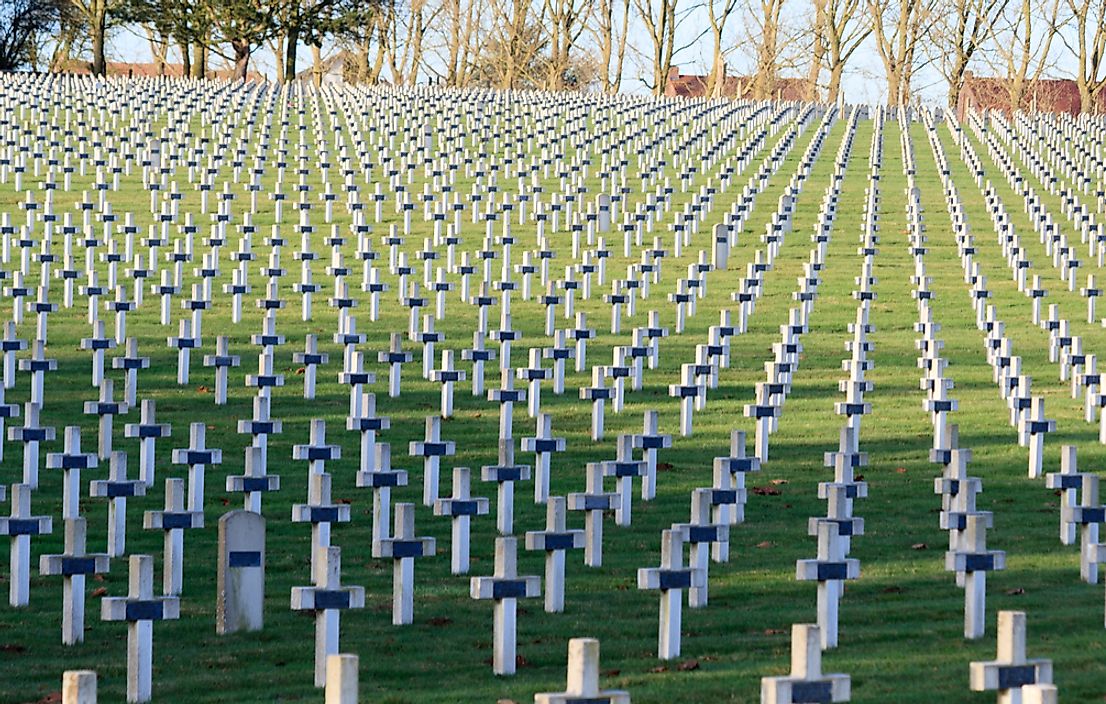Battle of Passchendaele - Famous Battles in History

The Battle of Passchendaele, also known as the fight of the Third Battle of Ypres, was a fight by the Allies against the German Empire in July 1917. The “Battle of Mud” was another term used by the soldiers who fought at Passchendaele.
5. Background
On August 4, 1914, the Germans invaded Belgium, prompting the British government to declare war against them. The German invasion was against the Treaty of London which had rendered Belgium sovereign. The British Expeditionary Forces (BEF) arrived in Belgium in August 1914 to begin the operation. In 1915, the British offensive was not possible as they lacked resources for executing the process. On December 19, 1915, there was a change in the leadership of BEF as Sir Douglas Haig succeeded Sir John French as the commander in chief. In 1916, minor German initiated operations took place in Ypres Salient. The British began operations so as to regain the territories that had been occupied by the Germans. In 1917, the Flanders operation took place, and the French Commander-in-Chief Neville organized activities to be done in three parts.
4. Makeup of the forces
Sir Douglas Haig commanded the British Expeditionary Forces (BEF). The British commander chose Gough to lead the Fifth Army to attack the Germans offensively. The Germans had the Fourth Army defending the ridges. The Canadian Troops also fought the German Empire in Passchendaele.
3. Description of the Engagement
Haig had selected Gough to be lead offensive and on June 10, 1917 he led the bombardment on the German lines and ten days later the German Fourth Army was still intact as the British suffered numerous casualties. The British soldiers were not helped any further by torrential rains that caused drainage problems creating liquid mud that they drowned on. The Germans had pillboxes that helped the soldiers view any advancing enemy and then firing. This weather conditions helped the Germans in their success. Haig then suspended the attacks as he waited for reinforcement. Under the leadership of Herbert Plumer, the British offensive was launched and led to success as they captured a ridge that was east of Ypres. There were further attacks by the British troops and other Allied forces leading to heavy casualties as German poured mastered gas to kill their enemies. The British and Canadian forces finally reached Passchendaele on November 6, 1917, and that is when Haig stopped the offensive claiming success.
2. Outcome
Germany came to near destruction in the 1917 Flanders battle. Although the final number is often debated, about 244,897 British casualties and 400,000 German losses are aaccepted. After three months of fighting, British and Canadian forces managed to take up control over Passchendaele village in Flanders.
1. Historical Significance and legacy
The Menin Gate Memorial to the Missing is a Commonwealth nation’s commemoration for the individuals who died in Ypres Salient. Tyne Cot Cemetery has the names of the servicemen from the United Kingdom and New Zealand who died in the battle. The Celtic Cross memorial commemorates the Scottish contributions in the war. Passchendaele Memorial gives tribute to the fallen Canadian Corps who participated in the Passchendaele war.







